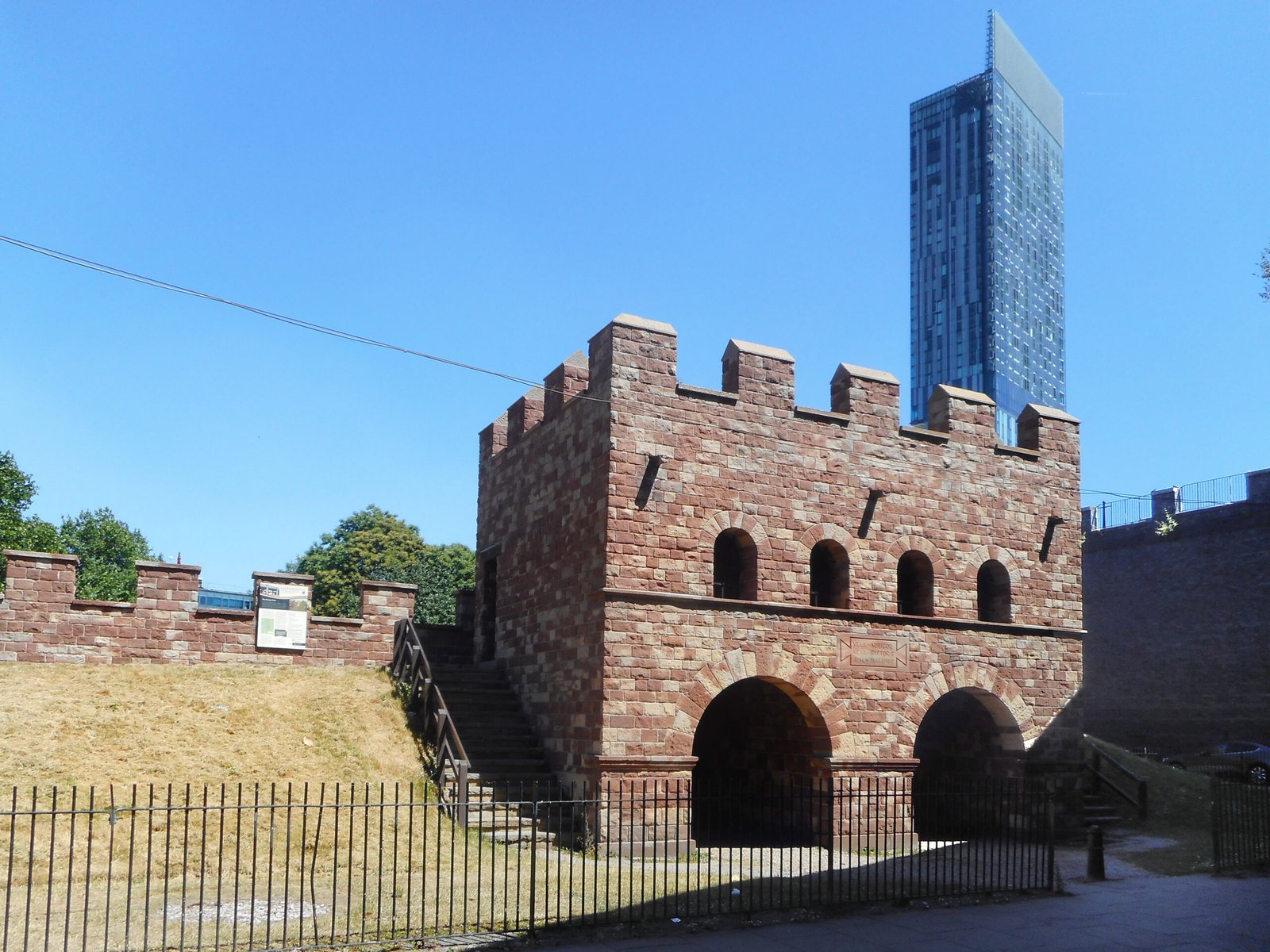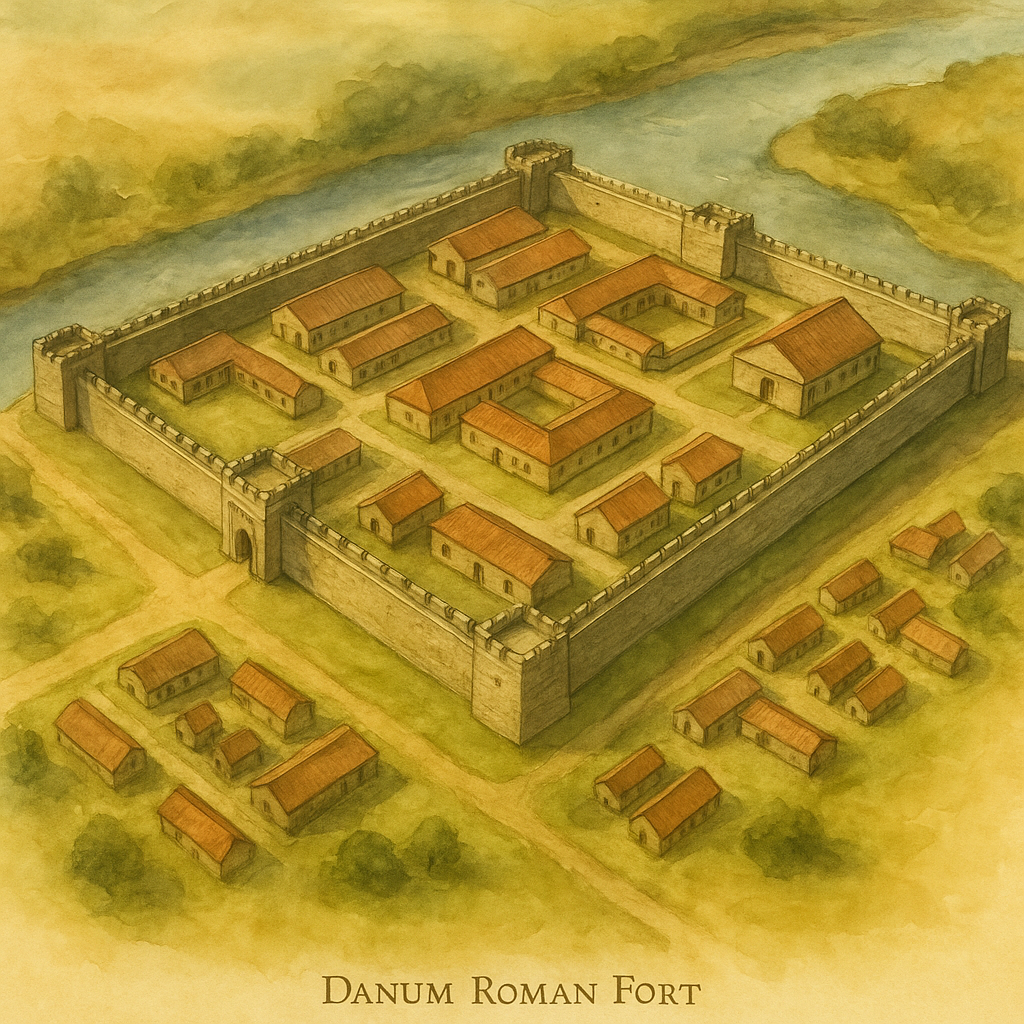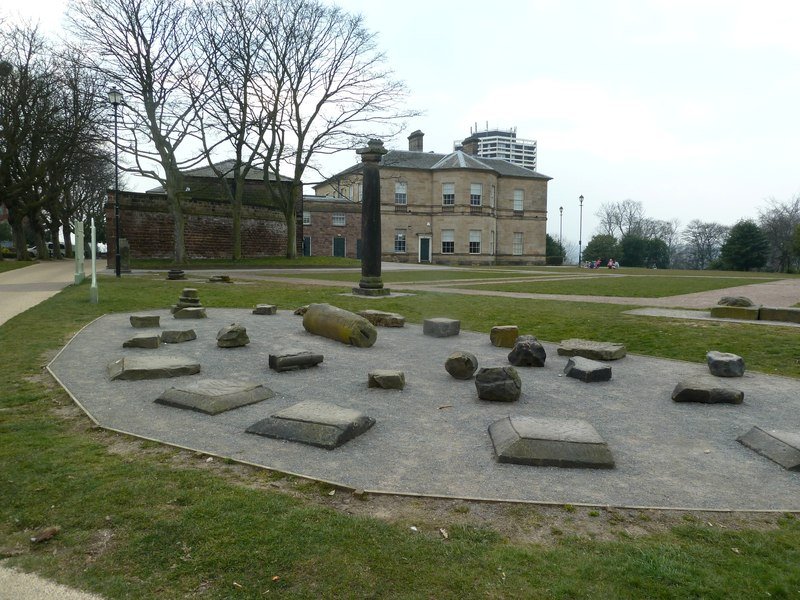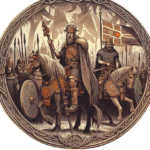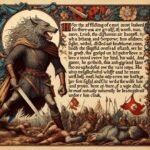
Cerialis, Agricola and the Conquest of Northern Britain
Gnaeus Julius Agricola
Gnaeus Julius Agricola was a Roman general and governor of the province of Britannia from 78-84AD. He is credited with overseeing the final conquest of Britain.
In a series of annual military campaigns Agricola put down revolts in north Wales, subdued the Brigantes tribe in the north, extended Roman control over the Scottish lowlands, where he established a string of forts between the Forth and the Clyde, sent troops into Galloway, and made inroads into the eastern Highlands. During the latter campaign his vessels were the first to circumnavigate the islands.
In 83 or 84AD Agricola met the Caledonian war leader Calgacus in a major battle at Mons Graupius. The Caledonians attempted to attack the Roman line from the rear but were routed by Agricola’s reserve cavalry. According to Roman reports Calgacus’ men suffered 10,000 dead compared to but 360 Romans casualties. The actual site of Mons Graupius is not known.
Shortly after this last triumph, Agricola was recalled to Rome by Domitian, perhaps because of jealousy over Agricola’s successes and his growing reputation. He never returned to Britain, but was sent to quell disturbances on the Danube frontier.
Agricola’s life and exploits were later made famous in the biography written by his son-in-law Tacitus.
NOTE: Agricola’s name is sometimes spelled “Gnaeus” rather than “Cnaeus”
Tacitus, a historian with bias?
Our chief source for the Roman conquest of northern Britain is, of course, the historian, Cornelius Tacitus, in his eulogistic biography of his father-in-law, Gnaeus Julius Agricola. Not surprisingly, Agricola’s achievements, culminating with those in Britain, provide the centrepiece of this work. The impression that Tacitus clearly wished to give was that it was largely down to Agricola that Roman arms progressed from the north Midlands almost to the very north of Scotland, and that it was a short-sighted and envious emperor (Domitian) who ordered a retreat from much of this territory.
It has long been suspected that this account is, to say the least, ‘economical with the truth’; recently, however, we have begun to acquire the means to put the matter to the test rather more confidently. The first point to make is that the dates of Agricola’s governorship were almost certainly AD. 77-83 (not 78-84, as previously accepted); the change is due to the impression which Tacitus clearly gives, that the interval between Agricola’s consulship in AD. 77 and the taking up of his governorship was short, and that he is unlikely to have ended his consular tenure later than June or July. His first campaign (in north Wales), therefore, which we are specifically told was undertaken very late in the campaigning season, fits much better if it belonged to the autumn of his consular year.
The revised dating has important implications for the understanding of the course of Agricola’s governorship, as crucial points in it can now be seen to coincide with what were politically the most important dates of the period AD. 79 (the death of Vespasian and the accession of Titus; end of campaign three), and AD. 81 (the death of Titus and the accession of Domitian; end of campaign five). We must allow that such events in Rome were capable of having major effects on the conduct of provincial governors and campaigning armies, as incoming emperors must have carried out reviews of ongoing activities.
The Conquest of Britain
The chief purpose of the present paper is to attempt to create a more realistic account of the conquest of northern Britain, bearing in mind the whole assemblage of evidence that can be derived from literary, epigraphic and archaeological sources and the observation, made many years ago by Professor Barri Jones and which pointed the way to the present exercise, that ‘Agricolan is a much overworked adjective’. When the Romans came to Britain in AD. 43, it is likely that they very soon forged a mutually beneficial relationship with Cartimandua, the leader of the northern tribe of the Brigantes.
Her name suggests that she may have been intrusive from further south, as the mandu element is reminiscent of Mandubracius, a leader of the Trinovantes (of Essex) in the time of Julius Caesar. From Rome’s point of view, the value of such a treaty relationship would have been to provide a tribe that was at least ‘neutral’ on the northern flank of the initial advance. For Cartimandua, friendship with Rome would have meant help, when necessary, against Venutius who was possibly an indigenous tribal leader and who is singled out for comment by Tacitus for his qualities as a warrior.
It may indeed have been Rome that insisted upon the marriage of these two as a means to ensuring stability in the region. The first test of the relationship that is on record came in A.D. 51, when the southern warlord, Caratacus, after defeat by Rome somewhere on the Wales/Shropshire border, asked Cartimandua for sanctuary.
It is possible that the hoard of mainly Trinovantian gold coins, which was found in 1998 in West Yorkshire, represents the whole (or part) of a payment by Caratacus’ southern kin to secure his safety. Instead, Cartimandua felt sufficiently confident in her Roman alliance to run the risk of local political ‘fall-out’, and handed the British leader over to Rome.
It may be that this act of betrayal precipitated the first outbreak of trouble between Cartimandua and her husband. Although chronologically very imprecise, Tacitus alludes to periodic disturbances which had to be put down by Roman military intervention. It is apparent that these episodes, in the 50s and 60s, did not lead to permanent Roman occupation, but were rather characterised by what would nowadays be called ‘search-and destroy’ missions.
Such activities are difficult to fix with any precision archaeologically, but it may be surmised from find spots of characteristically early Roman copper coins that land-based troops worked northwards from such bases as Wroxeter and Littlechester, whilst other troops were taken by coastal shipping, perhaps from a fort at Chester, to be disembarked in the northwest’s river estuaries to effect junctions with the land-based troops; it is likely that the Ribble estuary will have been particularly important, providing access via the Ribble/Aire corridor to Barwick-in-Elmet, which has been canvassed as Cartimandua’s centre .
The final upheaval certainly occurred in AD. 69, when Roman troops were distracted by civil war. It is evident that on this occasion Venutius prevailed over his former wife, who had to be rescued by Roman troops, and is not heard of again.
The Brigantian War
As Tacitus shows, overnight this changed Brigantian territory from a treatied to an openly hostile neighbour. Tacitus is far from complimentary in his remarks about the then Governor, Vettius Bolanus, who, he says, was too mild a man for a dangerous province. It would, however, be as well to remember two things: first, Bolanus remained in position for two years after the Brigantian volte-face, and can hardly have spent that time in idleness. Secondly, one source specifically and another more generally, suggest that during this period, Roman arms penetrated into Caledonia – a term of rather vague location in Roman writers, but evidently suggesting an area to the north of the Forth/Clyde isthmus.
Respectively, these sources are the Domitianic poet, Papinius Statius, and the encyclopaedic historian, the Elder Pliny, who perished in the eruption of Vesuvius in AD. 79. Further, this early entry into Scotland is confirmed by another contemporary poet, Silius Italicus. It would not be unreasonable to suggest that not only did Bolanus’ troops range widely in northern Britain but that they may have been responsible for the defeat and removal of the hostile Venutius, perhaps having chased him into Scotland; it would not be the last time that Rome would be troubled by political and military connections between the Brigantes and certain of the tribes of southern Scotland.
Further, it is evident that although Bolanus did not live long after his governorship, he was regarded by the emperor, Vespasian, as a man of considerable achievement. The next governor was a man of impressive status in the new Flavian regime; Cerialis Petillius was the son-in-law of Vespasian. He had served in Britain before during Boudica’s rebellion and had taken a part (albeit not too distinguished) in the war which had in AD. 69 brought his father-in-law to power; most recently (AD. 69-70) he had brought to a close a dangerous rebellion among tribesmen on the Rhine (though again not without mishap along the way).
Tacitus and Cerialis
It has been written that Tacitus loathed Cerialis; certainly, he does not go out of his way to load the man with praise for his achievements either in Britain or elsewhere. The historian does nonetheless admit that under Cerialis much of the Brigantian territory was conquered, or at least fought over, though he has to add that the fighting was not uncostly. Professor Anthony Bidey has argued that Tacitus’ dislike of Cerialis may have stemmed from Cerialis’ part in AD. 83, along with his brother-in-law, the emperor Domitian, in the removal of Agricola from the governorship of Britain.
This may have contributed, but another cause suggests itself: in AD. 60-61, both Cerialis and Agricola were in Britain, the former as commander (legatus) of legion IX (which received something of a mauling), the latter as a military tribune (tribunus militum) evidently on the staff of the governor, Suetonius Paullinus. In the aftermath of the rebellion, it is likely that Cerialis and Agricola found themselves on opposite sides of an exceedingly acrimonious post-mortem. In temper, too, the two men were very different: Cerialis, highly placed, an opportunist and a risk-taker (not always successfully); Agricola, efficient, methodical, and perhaps a little colourless – or, as he has recently been described, a ‘modest achiever’. Envy for the latter, about the former, is not unknown in the human condition.
Cerialis in Britain
Cerialis came to Britain in AD.71; his instructions were plainly to move the conquest forward, and he brought with him a new legion, II Adiutrix, which had recently been recruited from members of the fleet at Ravenna. It would seem reasonable to suppose that part, at least, of this unit was based at Chester, to convey troops up the coast of north-west England. Once again, it is not easy to trace the movements of Cerialis’ campaign archaeologically, although coinage and Samian pottery help, and dendrochronology has recently highlighted two probable military sites of this period, Ribchester and Carlisle. Tacitus provides one extra clue – that Cerialis divided his army between himself and Agricola, who was commander of legion XX Valeria Victrix at Wroxeter. Considering this, it would not seem unreasonable to suppose that Cerialis operated east of the Pennines with his old legion (the ninth), whilst Agricola ‘mirrored’ his commander’s actions on the western side of the country.
It would appear that the western advance was again on two fronts, overland from sites such as Wroxeter and Littlechester, crossing the Mersey near Wilderspool, the Ribble at Walton-le-Dale, and probably establishing a fort on the Lune at Lancaster. From Lancaster, the Lune and Eden valleys were followed to Carlisle. The eastern route established a new fortress for legion IX at York, and reached perhaps as far as Corbridge, although some at least of Cerialis’ troops must have crossed Stainmore to meet up with Agricola’s. The fleet, too, will have played its part, taking troops to the Mersey and the Ribble with a disembarkation-site at Kirkham, which in Roman times was much closer to the water than it now is, and from which it was a straightforward advance to Ribchester. That Chester was the base for this seems clear, though it should be noted that Chester was not, until Agricola’s own governorship, a base for a land-based advance. Indeed, it has been observed that the road northwards from Whitchurch originally crossed the Dee at Farndon/Holt, the extension to Chester being secondary to this.
Each side of the Pennines also saw the separation of people whom the Romans evidently chose to protect: in the east, the coastal Parisi were separated from their Brigantian neighbours, whilst in the north-west, a road from Carlisle to Maryport (or perhaps Beckfoot) through Blennerhasset separated the good agricultural land of the Solway Plain, evidently the territory of the Carvetii – from the Brigantian hill-farmers. These provide good examples of the policy of ‘divide-and-rule’, with which Tacitus credits Cerialis in Germany and Agricola in Britain during his own governorship.
Advances into Scotland
Again, it seems likely that Cerialis’ troops advanced into Scotland: the objective here may have been, in part at least, the protection of the grain-producing land of the Votadini and Venicones in the east, on either side of the Firth of Forth. Coin evidence suggests that Cerialis advanced northwards from Carlisle to Newstead, Cramond and Camelon, and from there perhaps as far as Strageath. If, indeed, Cerialis is to be traced that far north, it does not seem unreasonable, considering what had been done elsewhere, to suggest that he may have inaugurated the Gask Ridge watchtowers, as a way of separating the coastal Venicones from their inland neighbours.
All of this suggests that the achievements of Cerialis’ governorship were considerable in terms of territorial gain and political and infrastructural organisation; so what of Agricola’s own governorship from 77 to 83? Tacitus is insistent that Agricola’s tenure got off to a dramatic start, with an assault, very late in the campaigning season, (presumably of A.D. 77) on the Ordovices and Anglesey. The base for this was probably Wroxeter, as Chester, because of marshland to its west, will have provided poor overland access to north Wales. Further, epigraphic evidence, dateable to A.D. 79, shows that Agricola was responsible for building, the fortress, at Chester. Although the site was not, as we have seen, regarded as ideally placed for land-based campaigns of conquest, its access to the north-west by land and sea enhanced its potential as a base for occupation.
It would seem likely that we should link with this the construction of a route across the Pennines from Chester to York, with new forts along it at Northwich, Manchester and Castleshaw. Further, another road was taken northwards from Manchester to Ribchester, joining the earlier campaign-route at Burrow-in-Lonsdale. It would appear that this further penetration of the north-west was, as Tacitus suggests, in pursuit of the policy of ‘divide-and-rule’. The amount of ground evidently covered in Agricola’s second campaign would seem to leave little leeway for serious fighting, and it is fair to conclude that, since this territory had already been fought over during the governorship of Cerialis, the main thrust of Agricola’s work was political. Again, it appears that the Lake District, south of the Carlisle to Maryport line was omitted; none of the Lake District forts, on the evidence of coins and pottery, seem to have come into existence earlier than the late 80s or early 90s that is, after the post-Agricolan evacuation of Scotland.
It would suit the tactics of this campaign, with its two northward thrusts laterally linked, if it was Agricola who was responsible for the establishment of the road between Carlisle and Corbridge which, since medieval times, has been known as the Stanegate. Although this route did not come to form the frontier of Britannia until after Agricola’s departure from the province, the question of possible ‘stopping-points’ did arise during his tenure. Thus, whilst clearly some military action took place during this campaign, the chief imperatives were probably consolidatory and political, forming relationships with friendly groups, and protecting them from those that were more hostile, as Cerialis had done during his tenure.
Agricola’s third campaign
Agricola’s third campaign in A.D. 79, the last year of Vespasian’s reign – extended northwards the lines of advance of the previous year Tacitus affords us a clue in his observation that Agricola reached as far as the river Tay. It appears likely that this campaign represented an advance upon previous work: the Gask Ridge lines, which separated the coastal people of Fifeshire from those of the interior, was developed and extended as far as the Tay, and an internal line of ‘glen blocking’ forts was established from the Clyde in the direction of the later legionary fortress at Inchtuthil. This line facilitated the policing of movement in the glens, which was particularly important if pressure was to be kept on the Caledonian leadership.
The accession of Titus, however, appears to have brought about a change of policy; the next two campaigns (of AD. 80 and 81) were evidently concerned with ‘consolidation’ in southern Scotland. A line of forts (Barochan, Mollins and Camelon) anticipated the principle of the Antonine Wall in ‘fortifying’ the narrow neck of land between the Forth and the Clyde, though the Agricolan line was a little to the north of that of Antoninus Pius in the second century. From what Tacitus says, it appears that disputes were surfacing whether the Forth/Clyde line should mark the northern limit of the province, or whether ‘total conquest’ should still be the objective. By describing advocates of the former policy as ‘cowards’, Tacitus makes it very plain what his (and presumably Agricola’s) views were on this matter.
It is not unlikely that Titus was becoming aware of problems nearer to home, which might have made total conquest in Britain a luxury. In this connection, it is worth mentioning that inscriptions show that in AD. 80 detachments were sent from all the British legions for service elsewhere.
The activities of the fifth campaign (of AD. 81) are harder to place because of vagueness in Tacitus’ language and difficulties with the text itself. However, it seems reasonable to suppose that some, at least, of the campaign was occupied with Dumfries and Galloway – an area that proved to be of persistent difficulty to Rome. We are also told that, during this year, Agricola contemplated the conquest of Ireland, and it is assumed that he may have been around Stranraer or Portpatrick.
Although there is no evidence to suggest that Agricola pursued the ‘Irish objective’ at all, Rome’s relations with Ireland have recently received a higher profile because of the disclosure of the discovery of Roman material at the promontory-fort at Drumanagh (north of Dublin). Tacitus’ reference to the use of ships in this campaign also suggests that the method of proceeding in south-west Scotland may have been with the dual approach of land-based and sea-borne troops, which is again specifically mentioned in connection with the following year’s activities in northern Scotland.
Unexpectedly, Titus died in AD. 81, to be succeeded by his younger brother, Domitian, an emperor for whom Tacitus had no regard at all. Domitian’s accession, however, appears to have initiated another revision of policy, with a decision to proceed into northern Scotland. However, it is not clear whether this was directed towards total conquest, or whether the objectives remained more limited – for example, delivering a hammer-blow which would effectively neutralise the Caledonians, and thus allow Roman options to remain more flexible. In the event, the sixth and seventh campaigns appear to have been concerned with a principal objective – to force the Caledonians to battle and thus achieve a Roman victory.
This was done by denying to the Caledonians access to the fertile coastal lowlands and interfering with their grazing-practices in the glens, intending to making them sufficiently desperate and frustrated to want to fight sooner rather than later. The Romans did not have things all their own way; Tacitus records how the ninth legion very nearly suffered a disaster in a camp which, in the aftermath, was named Victoria (possible Dalginross). Further, the Caledonian chieftain, Calgacus, in an oration ‘given’ to him by Tacitus seems to suggest that Agricola was having to keep his army up to strength by recruiting British auxiliaries. Agricola’s progress is marked by permanent forts up to the Tay, and thereafter by a line of campaign-camps up to and along the coast of the Moray Firth. These camps are characterised by their unusual entrance-ways (known as ‘double-claviculas’), which created very narrow access. It seems likely that these constructions guarded river-crossings along the coast of Moray, perhaps as far as Inverness. Again, it would seem logical that simultaneous landings by the fleet were involved. However, the decisive engagement of these last two campaigns was the battle at a site called by Tacitus Mons Graupius, in which the Romans perpetrated what seems to have been genocide on the male (that is, fighting) population. This should have bought peace for approximately twenty years. The battle-site remains elusive, although it must have been close to the Moray Firth. One author has even suggested that the latin words, montem Graupium, may represent a manuscript corruption of words meaning ‘Hill X’.
With the battle won, Agricola was shortly afterwards withdrawn from Britain; he had served approximately twice the normal length of tenure. Yet Tacitus represents his recall as unnatural and unreasonable, and due to Domitian’s jealousy of Agricola’s achievement, an accusation that is borne out neither by the length of Agricola’s tenure nor by the character of Domitian’s own military successes on the Rhine. It is likely that the decision was taken by Domitian with the consul of A.D. 83, who was either Petillius Cerialis himself or a close relative of his; hence, the probable reason for the historian’s dislike of Cerialis.
Deriving a working frontier
The recall of Agricola did not, however, mean the immediate end of the occupation of northern Scotland. Considering its eventual abandonment in A.D. 87, still unfinished, it would seem likely that all construction-work on the legionary fortress at Inchtuthil post-dated Agricola. That this fortress was commenced, however, demonstrates the expectation that Britain would retain a garrison of four legions a hope which, by A.D. 87, was shown to be beyond fulfilment. A legion (II Adiutrix) was recalled to the Continent, and with its transfer went realistic hopes of maintaining, in the long term, the hold on northern Scotland. Agricola’s victory at Mons Graupius, however, had done its job; for it facilitated an orderly, thorough and safe withdrawal in A.D. 87, to a series of large forts, which had been built in anticipation on the Stanegate-forts, such as Vindolanda and Corbridge, and perhaps the newly discovered Cummersdale (south-west of Carlisle).
Thus, a working frontier-zone had been achieved; the Stanegate remained the frontier of Britannia until its enhancement in the early 120s by Hadrian’s Wall. Tacitus, however, retained his intoxication with the days of hope and glory, spurred on no doubt by his sense of loyalty to the memory of his father-in-law: “Britain was completely conquered, and immediately allowed to slip” a literally true statement, but ‘loaded’.
In reality, however, Domitian’s advisers realised that consolidation of conquest further south was much more important than holding on to every square inch of territory that had been won. Agricola’s victory had provided the opportunity to consolidate successfully, but subsequent events showed that it was no easy matter to achieve a balance, whereby in Scotland Rome could do business with its friends (such as the Votadini and Venicones of the East Coast) and yet keep under control enemies and nuisances such as the Novantae of Dumfries and Galloway.
In truth, the Flavian period deserves to be seen as one of great achievement in northern Britain, and the contributions made to this by Petillius Cerialis, Julius Agricola and their unknown successor(s) are by no means inconsiderable. Perhaps, too, Cerialis’ predecessor, Vettius Bolanus, also deserves from posterity more credit than, thanks to Tacitus, he has normally received.







